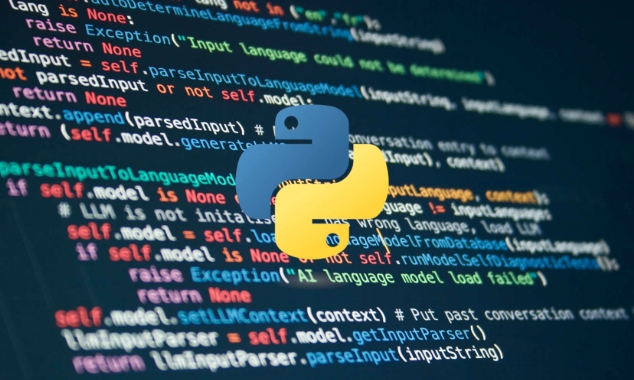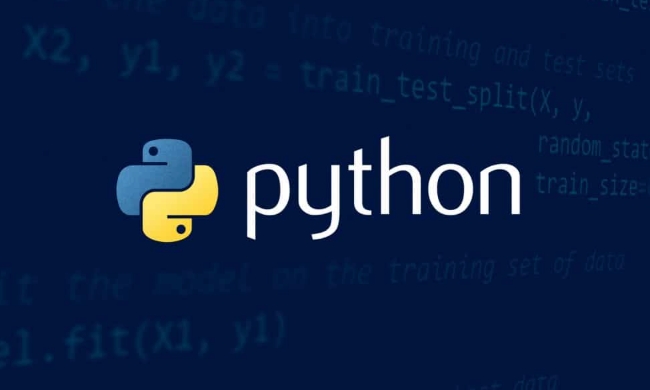The core of using Python for semantic segmentation is to select the right tools and methods. The specific process includes: 1. Prepare data and environment, use standard data sets or custom label data, and install PyTorch or TensorFlow and image processing library; 2. Select a model, and you can directly call pretrained models such as DeepLabV3 or custom build encoder-decoder structure; 3. The inference process requires image preprocessing, model input and output processing to obtain pixel-level classification results; 4. Pay attention to color mapping and format conversion when visualization and saving, which can be implemented by matplotlib or OpenCV. Mastering these steps can achieve a more reliable semantic segmentation effect.

If you want to know how to use Python for semantic segmentation, the core is actually choosing the right tools and methods. There are many ready-made libraries and frameworks in the Python ecosystem. As long as you understand the process and key points, this matter is not that difficult.

1. Preparation: Data and Environment
The first step in semantic segmentation is to prepare the data and the running environment. Commonly used data sets such as Cityscapes, ADE20K or data you marked yourself. Images usually require corresponding label maps, that is, each pixel has category information.
In Python, you need to install at least PyTorch or TensorFlow, plus basic processing libraries such as OpenCV, PIL, and NumPy. It is recommended to use virtual environment management dependencies to avoid conflicts.

Common practices:
- Loading standard datasets using
torchvision.datasets - Customize the Dataset class to read its own data
- Using Albumentations to process image enhancement
2. Model selection: Direct call or customize
There are many pre-trained models that can be used directly. For example in PyTorch:

import torchvision.models as models model = models.segmentation.deepabv3_resnet50(pretrained=True)
This model has been trained and can be used to reason immediately. If you want to train your own data, you can modify the number of output channels according to the task and replace the last classification header.
Commonly used models include:
- DeepLabV3
- FCN
- UNet (commonly used in medical images)
- SegNet
If you build the model structure yourself, remember to pay attention to whether the encoder-decoder design is reasonable and whether the skip connection is appropriate.
3. Inference process: input image → output segmentation diagram
The core of the reasoning part is to feed the image to the model and convert the output into a visual segmentation diagram.
Basic steps:
- Image preprocessing (scaling, normalizing, and converting to Tensor)
- Input the model to get the output (usually tensor)
- Do argmax for the output to get the category of each pixel
- Map categories into color maps to display
A small trick is to use torch.nn.functional.interpolate to adjust the output size so that it is consistent with the original image.
Sample code snippet (simplified version):
import torch
from PIL import Image
import torchvision.transforms as T
# Load model model.eval()
# Preprocess image img = Image.open("test.jpg")
transform = T.Compose([T.ToTensor(), T.Normalize(mean=[0.485, 0.456, 0.406], std=[0.229, 0.224, 0.225])])
input_tensor = transform(img).unsqueeze(0)
# reasoning with torch.no_grad():
output = model(input_tensor)['out'][0]
segmentation_map = output.argmax(0).cpu().numpy()4. Visualize and save results
After getting the split map, the next step is to visualize and save. You can use matplotlib to display images or save them as image files using OpenCV.
A small detail is the colormap, which determines why different categories display colors. Many projects use the default color scheme of COCO or Cityscapes.
Pay attention to saving:
- Segmentation graphs are generally two-dimensional arrays of integer types
- If you want to save it to image format, you may need to convert it to RGB first.
- Some libraries (such as labelme) support the generation of JSON label files for subsequent use.
Basically that's it. Semantic segmentation seems complicated, but it is not too difficult to implement in Python. The key is to be familiar with the process and debug intermediate results. If you can control the three aspects of data, model and post-processing, you can achieve a more reliable effect.
The above is the detailed content of Semantic Segmentation with Python. For more information, please follow other related articles on the PHP Chinese website!

Hot AI Tools

Undress AI Tool
Undress images for free

Undresser.AI Undress
AI-powered app for creating realistic nude photos

AI Clothes Remover
Online AI tool for removing clothes from photos.

Clothoff.io
AI clothes remover

Video Face Swap
Swap faces in any video effortlessly with our completely free AI face swap tool!

Hot Article

Hot Tools

Notepad++7.3.1
Easy-to-use and free code editor

SublimeText3 Chinese version
Chinese version, very easy to use

Zend Studio 13.0.1
Powerful PHP integrated development environment

Dreamweaver CS6
Visual web development tools

SublimeText3 Mac version
God-level code editing software (SublimeText3)

Hot Topics
 Polymorphism in python classes
Jul 05, 2025 am 02:58 AM
Polymorphism in python classes
Jul 05, 2025 am 02:58 AM
Polymorphism is a core concept in Python object-oriented programming, referring to "one interface, multiple implementations", allowing for unified processing of different types of objects. 1. Polymorphism is implemented through method rewriting. Subclasses can redefine parent class methods. For example, the spoke() method of Animal class has different implementations in Dog and Cat subclasses. 2. The practical uses of polymorphism include simplifying the code structure and enhancing scalability, such as calling the draw() method uniformly in the graphical drawing program, or handling the common behavior of different characters in game development. 3. Python implementation polymorphism needs to satisfy: the parent class defines a method, and the child class overrides the method, but does not require inheritance of the same parent class. As long as the object implements the same method, this is called the "duck type". 4. Things to note include the maintenance
 Python Function Arguments and Parameters
Jul 04, 2025 am 03:26 AM
Python Function Arguments and Parameters
Jul 04, 2025 am 03:26 AM
Parameters are placeholders when defining a function, while arguments are specific values ??passed in when calling. 1. Position parameters need to be passed in order, and incorrect order will lead to errors in the result; 2. Keyword parameters are specified by parameter names, which can change the order and improve readability; 3. Default parameter values ??are assigned when defined to avoid duplicate code, but variable objects should be avoided as default values; 4. args and *kwargs can handle uncertain number of parameters and are suitable for general interfaces or decorators, but should be used with caution to maintain readability.
 Explain Python generators and iterators.
Jul 05, 2025 am 02:55 AM
Explain Python generators and iterators.
Jul 05, 2025 am 02:55 AM
Iterators are objects that implement __iter__() and __next__() methods. The generator is a simplified version of iterators, which automatically implement these methods through the yield keyword. 1. The iterator returns an element every time he calls next() and throws a StopIteration exception when there are no more elements. 2. The generator uses function definition to generate data on demand, saving memory and supporting infinite sequences. 3. Use iterators when processing existing sets, use a generator when dynamically generating big data or lazy evaluation, such as loading line by line when reading large files. Note: Iterable objects such as lists are not iterators. They need to be recreated after the iterator reaches its end, and the generator can only traverse it once.
 Python `@classmethod` decorator explained
Jul 04, 2025 am 03:26 AM
Python `@classmethod` decorator explained
Jul 04, 2025 am 03:26 AM
A class method is a method defined in Python through the @classmethod decorator. Its first parameter is the class itself (cls), which is used to access or modify the class state. It can be called through a class or instance, which affects the entire class rather than a specific instance; for example, in the Person class, the show_count() method counts the number of objects created; when defining a class method, you need to use the @classmethod decorator and name the first parameter cls, such as the change_var(new_value) method to modify class variables; the class method is different from the instance method (self parameter) and static method (no automatic parameters), and is suitable for factory methods, alternative constructors, and management of class variables. Common uses include:
 How to handle API authentication in Python
Jul 13, 2025 am 02:22 AM
How to handle API authentication in Python
Jul 13, 2025 am 02:22 AM
The key to dealing with API authentication is to understand and use the authentication method correctly. 1. APIKey is the simplest authentication method, usually placed in the request header or URL parameters; 2. BasicAuth uses username and password for Base64 encoding transmission, which is suitable for internal systems; 3. OAuth2 needs to obtain the token first through client_id and client_secret, and then bring the BearerToken in the request header; 4. In order to deal with the token expiration, the token management class can be encapsulated and automatically refreshed the token; in short, selecting the appropriate method according to the document and safely storing the key information is the key.
 What are Python magic methods or dunder methods?
Jul 04, 2025 am 03:20 AM
What are Python magic methods or dunder methods?
Jul 04, 2025 am 03:20 AM
Python's magicmethods (or dunder methods) are special methods used to define the behavior of objects, which start and end with a double underscore. 1. They enable objects to respond to built-in operations, such as addition, comparison, string representation, etc.; 2. Common use cases include object initialization and representation (__init__, __repr__, __str__), arithmetic operations (__add__, __sub__, __mul__) and comparison operations (__eq__, ___lt__); 3. When using it, make sure that their behavior meets expectations. For example, __repr__ should return expressions of refactorable objects, and arithmetic methods should return new instances; 4. Overuse or confusing things should be avoided.
 How does Python memory management work?
Jul 04, 2025 am 03:26 AM
How does Python memory management work?
Jul 04, 2025 am 03:26 AM
Pythonmanagesmemoryautomaticallyusingreferencecountingandagarbagecollector.Referencecountingtrackshowmanyvariablesrefertoanobject,andwhenthecountreacheszero,thememoryisfreed.However,itcannothandlecircularreferences,wheretwoobjectsrefertoeachotherbuta
 Describe Python garbage collection in Python.
Jul 03, 2025 am 02:07 AM
Describe Python garbage collection in Python.
Jul 03, 2025 am 02:07 AM
Python's garbage collection mechanism automatically manages memory through reference counting and periodic garbage collection. Its core method is reference counting, which immediately releases memory when the number of references of an object is zero; but it cannot handle circular references, so a garbage collection module (gc) is introduced to detect and clean the loop. Garbage collection is usually triggered when the reference count decreases during program operation, the allocation and release difference exceeds the threshold, or when gc.collect() is called manually. Users can turn off automatic recycling through gc.disable(), manually execute gc.collect(), and adjust thresholds to achieve control through gc.set_threshold(). Not all objects participate in loop recycling. If objects that do not contain references are processed by reference counting, it is built-in






